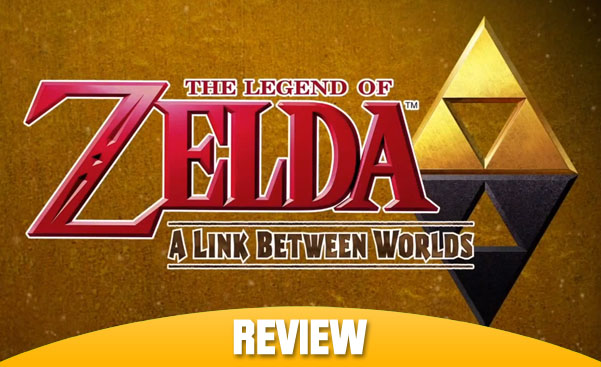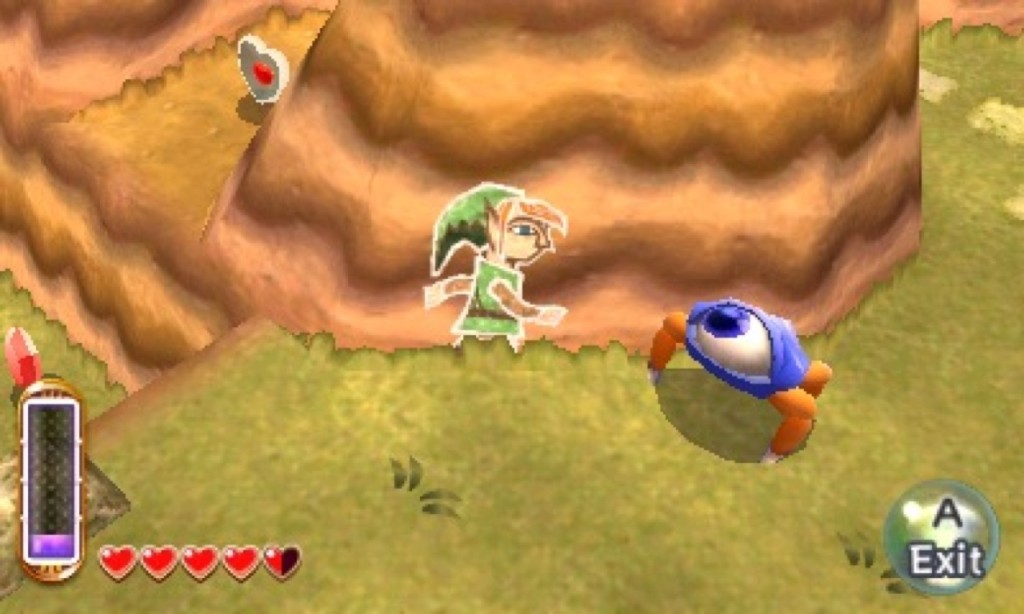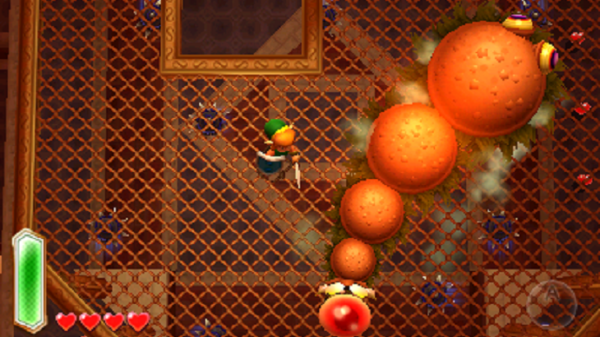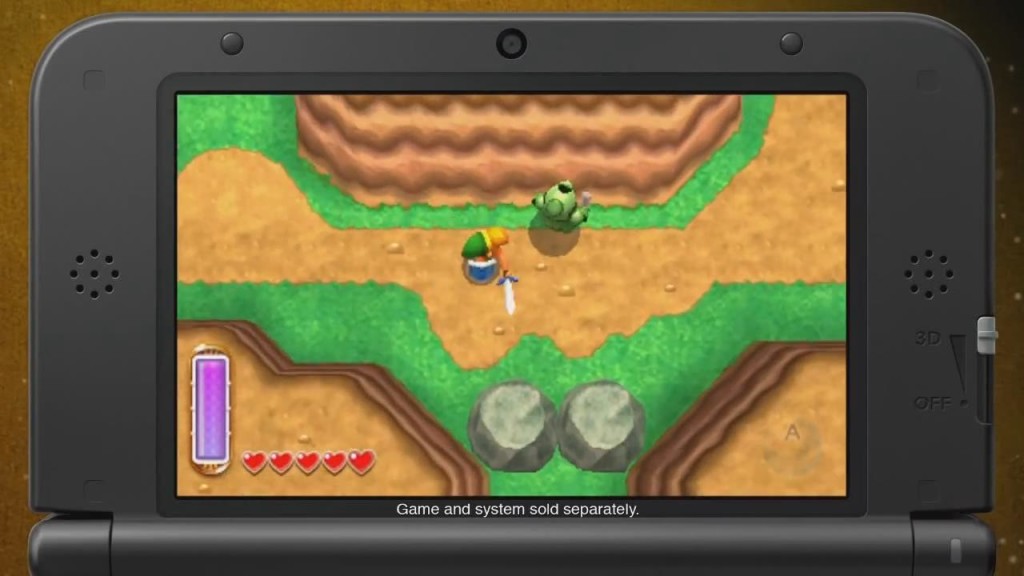Review: The Legend of Zelda: A Link Between Worlds
/ If there’s one thing Nintendo’s been consistent with over the years, it’s in the quality of its handheld Zelda games. Every one has been a joy to play, and with stylus play, the two most recent ones (Phantom Hourglass and Spirit Tracks) have experimented with the formula in fun ways. Interesting, then, that Nintendo decided to take a page from their back catalog and develop a remake of A Link to the Past. It was to our great fortune that halfway through its development Eiji Aonuma and Shigeru Miyamoto were reportedly so pleased with the project that it ended up becoming more than a mere remake – A Link Between Worlds is a classic Zelda in its own right, and while it does recall that timeless game in many ways, it also brings a touch of its own with its unique wall-shifting mechanic, which lends itself well to mind-bending puzzles and tricky boss fights.
If there’s one thing Nintendo’s been consistent with over the years, it’s in the quality of its handheld Zelda games. Every one has been a joy to play, and with stylus play, the two most recent ones (Phantom Hourglass and Spirit Tracks) have experimented with the formula in fun ways. Interesting, then, that Nintendo decided to take a page from their back catalog and develop a remake of A Link to the Past. It was to our great fortune that halfway through its development Eiji Aonuma and Shigeru Miyamoto were reportedly so pleased with the project that it ended up becoming more than a mere remake – A Link Between Worlds is a classic Zelda in its own right, and while it does recall that timeless game in many ways, it also brings a touch of its own with its unique wall-shifting mechanic, which lends itself well to mind-bending puzzles and tricky boss fights.
Though the dual overworld, various enemies, and locations of some secrets are very familiar to the SNES classic, the story, dungeons, puzzles, hidden challenges, most bosses (returning ones have slight twists), and collectibles are all totally new. This isn’t just a nostalgia trip or an attempt to improve on what is widely considered to be a perfect game. It’s a beast all its own.
The story appears to take place several generations after A Link to the Past. With Ganon long defeated, evil eclipses the land in the form of Yuga, a creepy sorcerer who swaggers about Hyrule turning people into paintings, notably the descendants of the Seven Sages. Link, a lazy blacksmith’s apprentice, gets tangled up in this mess, and must track Yuga to the parallel dimension of Lorule, which was once a beautiful land like Hyrule until its Triforce was destroyed. Here, Princess Hilda works with Link to halt Yuga’s attempted revival of Ganon, pleading for him to save her land as well as his. The story and writing, while not complex, are actually better than I expected for such a straightforward game, and the ending is surprisingly satisfying.
A Link Between Worlds’ defining mechanic, the ability to shift onto two-dimensional planes and traverse walls, is seamlessly woven through the experience, opening up a whole new plane for players to engage in. Though Link still moves in two dimensions across the top-down game world, you’ll be constantly scanning and sliding across every surface, as well as mentally picturing the dungeons in three-dimensional space. Very often the solution to a puzzle lies just beyond an overlooked corner.
If it sounds overwhelming or complicated, I’m doing the product a disservice. The simplicity and old-school nature of this offering is very welcome. Actually, the most refreshing thing about A Link Between Worlds is that the developers don't hold your hand through any of it or waste time with tutorials. In fact, within ten minutes of playtime, you are already armed with a sword and making your way through the first of many challenges. The dual-screen presentation is boss, with easy inventory and map access on the lower screen. Hot-swapping items has never been easier than with the Quick Equip menu. Helpful witches will teleport you across the map and brew up potions made from certain drops, saving time on the go. In true Nintendo fashion, there is a constant evolution in the way the player tackles the game’s challenges.
Similarly to A Link to the Past and Ocarina of Time, you’ll be tackling ten main dungeons – three early ones, and seven later ones, with two additional dungeons early on. It should be no surprise that these areas are the real meat of the game, where the player is tested in terms of skill and mettle. The Ice Ruins, Dark Palace, and Tower of Hera are standouts, but nearly every one ranks among the best Zelda dungeons in recent memory. The 3D effect is put to great use especially in the more vertical dungeons where having it at least slightly up is all but necessary. Unlike my play-through of Ocarina of Time 3DS, I thankfully experienced no issues going back and forth between the 2D and 3D screens.
As for the puzzles, they are not in any way limited to the dungeons. Taking a page from the best Zelda titles, oftentimes getting to the dungeons will prove to be just as challenging as besting them. While no trick room was enough to stump me for long (I think the longest I spent in one room was fifteen minutes), I did find each obstacle very enjoyable to tackle. I was honestly very impressed that Nintendo had it in them to make a game that matches A Link to the Past in terms of challenge and quality and even surpasses it in imagination and level design.
One much talked-about feature in this game is in the way items are acquired. From early on, every major item can be either rented or bought from Ravio, a shopkeeper who sets his wares up in Link’s house. Rented items will be lost upon death, whereas bought items are kept forever. This system allows the player to tackle the dungeons and overworld challenges in just about any order, which gives a sort of illusion of freedom. The downsides of this are that you miss the feeling of accomplishment upon discovering new items within dungeons, and that racking up a full set is no real challenge, since Rupees are not exactly hard to come by, and death becomes much less common the more one progresses in the game, due to the Zelda tradition of giving out Heart Containers like candy.
The growing ease of the experience (a time-tested Zelda problem) is actually my only real complaint – even if you pick up just the Containers dropped by every boss without seeking Heart Pieces, you’ll have thirteen Heart Containers by the time you reach the last dungeon – enough that even without a supply of potions, the challenge afforded by enemies and even bosses is thoroughly gimped. My initial thought was that this could have been avoided by forcing the player to tackle dungeons in a particular order and adjusting the difficulties of the enemies and bosses accordingly, but honestly, once you’ve got at least ten Containers, you can likely count your remaining in-game deaths on your fingers. Some may not have this problem, but I consider it a real issue. Thankfully we do have Hero Mode, which ups the challenge significantly as enemies deal four times the damage. I’m navigating it right now and it sure isn’t easy.
There’s so much A Link Between Worlds gets right. Whether it’s the incredible soundtrack, featuring beautiful renditions of both old and new tunes as a happy fusion of MIDI and real instruments, the fantastic dungeons, which are both challenging and intuitive, the slick presentation, or the plethora of things to do in the overworld, I doubt even someone seriously jaded with Zelda will find much to dislike, even if the winning formula still hasn’t changed. I even welcomed a return to the old ‘90s art style. From the moment you boot up the cartridge to the final notes of the end credits, A Link Between Worlds will keep you captivated. I don’t think I had my 3DS off or played another game in the time I spent in Hyrule/Lorule. This Zelda has ‘classic’ written all over it.
SCORE: 8/10
Reviewed by: Joseph Choi Platform: Nintendo 3DS XL
PROS
- Old-school Zelda goodness
- Top-notch dungeon designs and bosses
- Simple in theory but well-utilized wall-shifting mechanic
- Fantastic presentation and soundtrack
CONS
- Several moments and the layout of the world map will remind you strongly of A Link to the Past (not necessarily a bad thing, but at times this robs the game of its own identity)
- Lacking in relative difficulty until Hero Mode is unlocked






